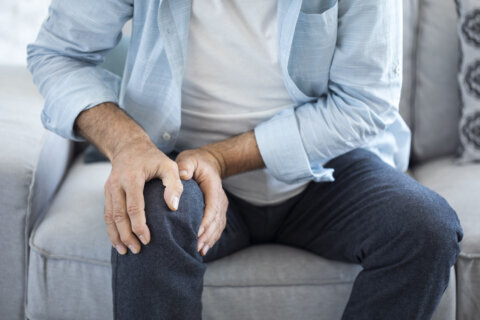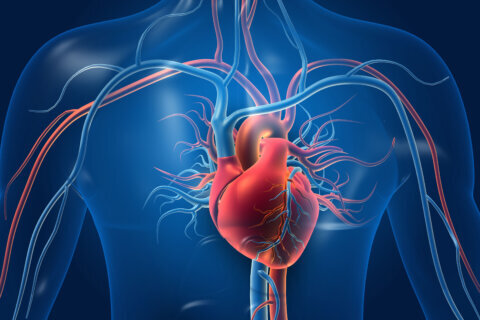This content is sponsored by MedStar Washington Hospital Center.
Many women experience things like bloating, pelvic pain and pressure, constipation or very heavy periods and may not know the cause. However, these are a few of the uncomfortable or painful symptoms associated with uterine fibroids.
Uterine fibroids — non-cancerous, hormone-driven growths that form on the uterine walls – are very common, and more than 70% of white women and 80% of black women will develop fibroids by age 49, according to a study published in the National Center for Biotechnology Information. Not all fibroids need to be removed, but if there are disruptive symptoms, it may be time to take action.
Although fibroids may feel like a regular part of women’s lives as they age, there are effective treatments that stop discomfort at the source, said Dr. Nora Tabori, chief of Interventional Radiology at MedStar Washington Hospital Center.
“Over the past few decades, advances in minimally invasive artery embolization have transformed [uterine fibroid embolization] into a safer, more effective outpatient procedure with a quick recovery—most patients are fully recovered within two weeks,” Dr. Tabori said.
Uterine fibroid embolization, also known as UFE, stops blood flow to the fibroid, reducing symptoms as the fibroid shrinks and fades away.
During the procedure, the patient is placed under “twilight anesthesia,” which makes them relaxed but still able to respond. The doctor sterilizes the skin on either the patient’s left wrist or groin at the hip and numbs the skin. The interventional radiologist will then make a small needle puncture in the wrist or groin to access the artery. A catheter will be inserted through the puncture and, using live image guidance, will go through the blood vessels and down to the arteries that supply blood to the uterus.
“We will use the catheter to place small, body-safe beads into the arteries supplying the fibroids, which blocks the blood flow,” Dr. Tabori said. “Over the next few days, the fibroid tissue will start to shrink and wither away.”
The entire procedure usually takes an hour or less, even when treating one large fibroid or many small fibroids, Dr. Tabori said. When the procedure is over, patients get a light snack as they come out of twilight sedation and then they are ready to go home.
Patients may experience some mild pain after UFE. For the first two days after the procedure, patients may experience cramps that feel a little stronger than period cramping, and can be managed with over-the-counter pain medication. Other symptoms – pelvic pain and fullness, low-grade fever, loss of appetite and fatigue – typically go away within a week, Dr. Tabori said.
“By seven days post-procedure, most women are back to their regular activities: Working, resuming intercourse, running a marathon, doing CrossFit, you name it! After UFE treatment, countless patients have told me, ‘I wish I’d done this years ago,’” she added.
There are other treatment options besides UFE – both surgical and non-surgical. The surgical options include: myomectomy, which removes the fibroids in the uterus and can be done through open or minimally invasive surgery; endometrial ablation, which applies targeted heat to the uterine lining and does not remove or shrink fibroids; and hysterectomy, which removes the uterus through open or minimally invasive surgery.
There are non-surgical options as well. Some of the options include: Sonata treatment, which is where ultrasound locates and targets individual fibroids with no incisions; and hormone therapy such as birth control pills or an IUD that can shrink fibroids. Also, over-the-counter pain relievers can help manage cramping or pain; exercise and a healthy diet can help patients feel more energetic, maintain a healthy weight and hormone levels, and improve mood. Practicing relaxation techniques such as meditation and deep breathing can help in pain reduction as well.
“Uterine fibroid symptoms range from annoying to nearly debilitating. You have options to improve your quality of life—the treatment you choose is based on the severity of your symptoms and your desire for future pregnancies,” Dr. Tabori said.
“Whether you need a diagnosis or you already know which treatment you want, MedStar Health can provide you with the option that best meets your needs.”
Read more about uterine fibroids in a blog post by Dr. Tabori on the MedStar Washington Hospital Center website.







